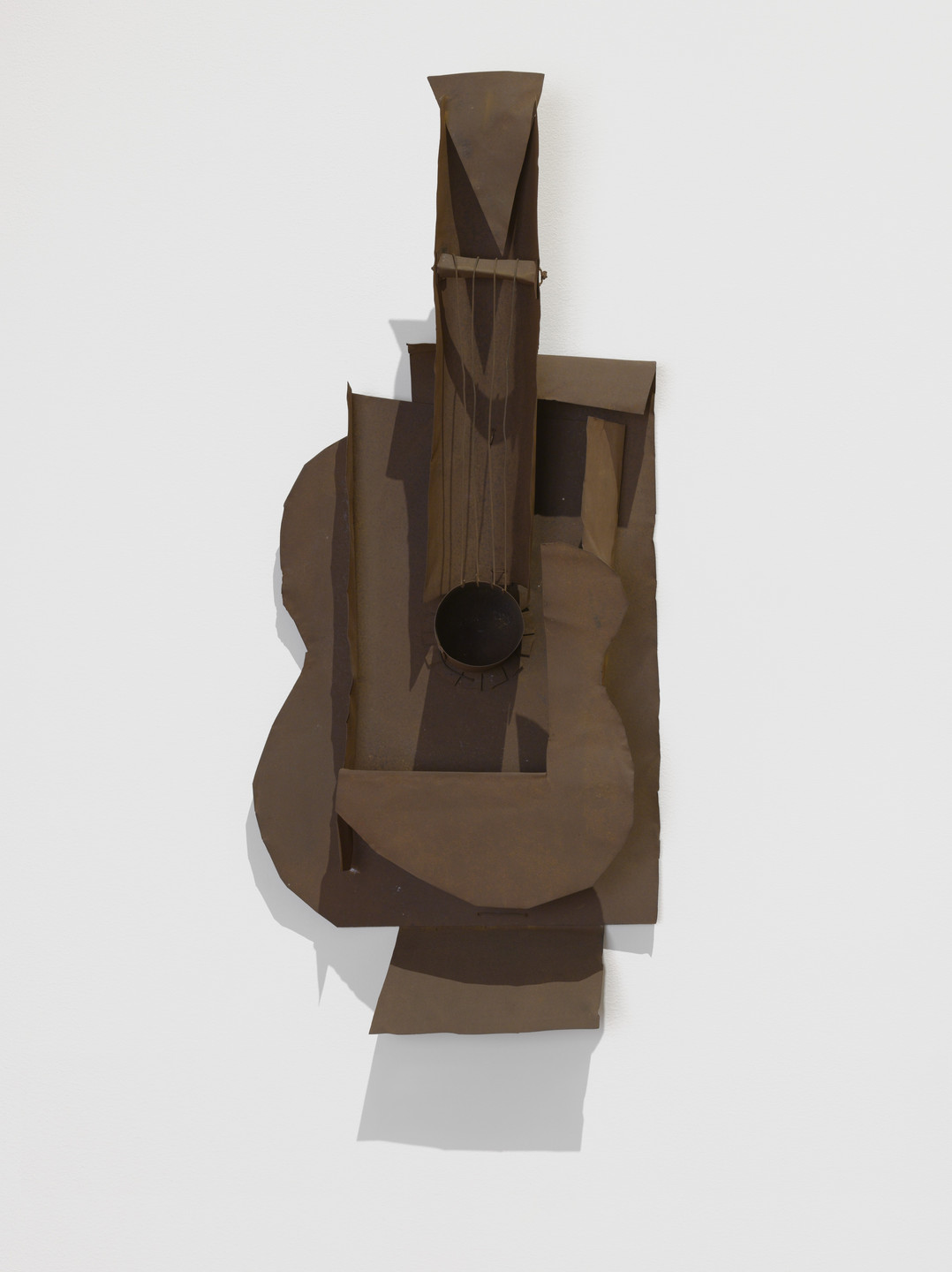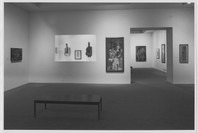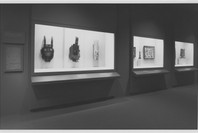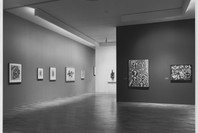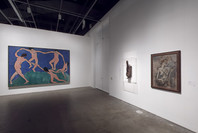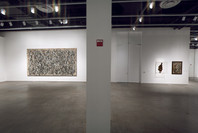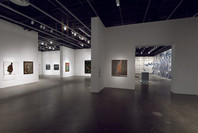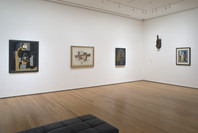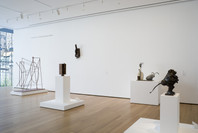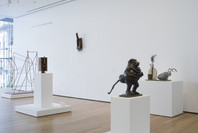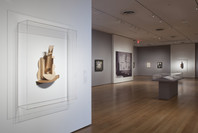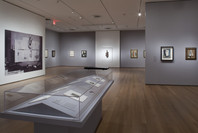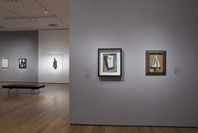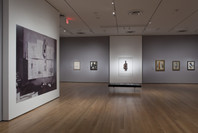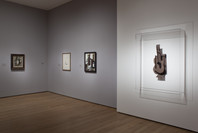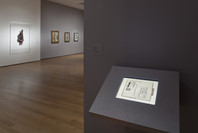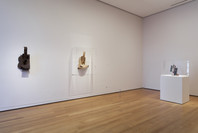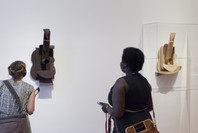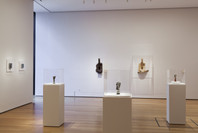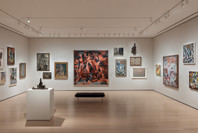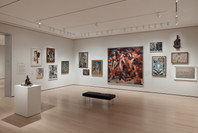To create Guitar Picasso made a radical leap from the sculptural tradition of modeling (carving or molding) to a new technique of assemblage. He created a first version of Guitar from cardboard in 1912, then later remade the work in sheet metal; the modern ordinariness of both of these materials is very different from traditional sculptural materials such as bronze, wood, and marble. The planes of the sheet–metal construction engage in a play of substance and void in which volume is suggested, not depicted. In a dramatic demonstration of the flexible way visual forms can be read in context, the guitar's sound hole, which normally recedes from the instrument's smooth surface, here projects outward into space.
Gallery label from Focus: Picasso Sculpture, July 3–November 3, 2008.
Before the twentieth century, sculpture often described the human form, and was principally an art of carving and modeling solids. In Guitar Picasso broke with these age-old traditions, examining an everyday object and initiating a new type of sculptural construction: built up from sheet metal, Guitar has no solid center but is open to space. A shallow arrangement of planes to be viewed from the front, it seems pictorial as well as sculptural, and relates to Picasso's Cubist collages of newspaper clippings and the like. This points to another departure from tradition: whereas ambitious sculptors of the period might work in bronze or marble, Picasso used sheet metal and wire—common, everyday materials, like the newspapers of the collages.
Picasso's guitar sculpture is the same size and shape as the real thing, but he shatters its form. If the front of a guitar is a plane concealing a volume, he cuts that plane away, opening up the interior as an empty box. If the sound hole is ordinarily a void, he gives it substance, turning it into a projecting cylinder (a device, Picasso said, inspired by the tubular eyes in an African Grebo mask). Viewed frontally, the cylinder's open rim becomes a line drawing of the sound hole. Here, Picasso has opened up the central core of sculpture, allowing us to see into and through it.
Publication excerpt from The Museum of Modern Art, MoMA Highlights, New York: The Museum of Modern Art, revised 2004, originally published 1999, p. 68.
“What is it? Does it rest on a pedestal? Does it hang on a wall? What is it, painting or sculpture?” These are the questions Picasso’s sheet metal Guitar prompted from bewildered visitors to his studio, according to French poet and art critic André Salmon. To these queries the artist is said to have replied, simply, “It’s nothing, it’s el guitare!” Like its cardboard predecessor, Picasso’s Guitar broke with the traditions of carved and cast sculpture. Its projecting planes, including the lower extension, create a sense of volume, generating real shadows rather than the rendered shading historically used to simulate depth in painted and graphic art.
British artist and writer Wyndham Lewis memorably remarked that many of Picasso’s early constructions, the cardboard Guitar implicitly among them, did “not seem to possess the physical stamina to survive.” His words suggest one reason why Picasso may have chosen to memorialize the revolution announced by his fragile cardboard instrument in the more
permanent material of sheet metal, in planes connected with wire in just a few ingeniously selected spots.
Gallery label from Focus: Picasso Sculpture, July 3–November 3, 2008.
